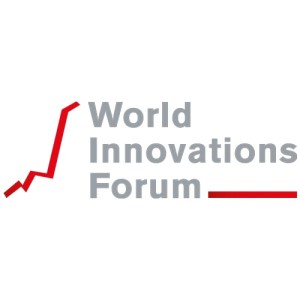Human Intelligence Augmentation (HIA): The Future of Human-Machine Collaboration
The Dawn of HIA In 1961, Douglas Engelbart introduced the world to Human Intelligence Augmentation (HIA). Instead of technology replacing humans, Engelbart envisioned a symbiotic relationship, where machines would amplify our capabilities. While the technology of the time couldn’t fully realize this vision, today, we stand on the verge of Engelbart’s dream.
The Essence of Intelligence Historically, intelligence was viewed as our ability to acquire and apply knowledge. Today, our understanding is more nuanced; intelligence is multi-faceted, encompassing logical reasoning, creativity, emotional intuition, and more. While humans possess unparalleled creative problem-solving abilities, our capacity to handle hyper-complex problems is limited. On the other hand, AI excels at processing vast amounts of data efficiently, free from human fatigue and biases. But AI lacks understanding, empathy, and purpose-driven context. The solution? A collaborative approach, maximizing the strengths of both humans and AI, holds the key to untapped potential. In all of human history, homo sapiens turned out to be a master in building tools to overcome virtually any physical deficiency. Humans can’t lift tons of weight, so we created a crane. Humans can’t run at 100 km/h to get fast from A to B. So, we built cars after we created wagons pulled by horses. We cannot easily comprehend what is involved in creating breakthrough innovations, so we built computer software that can help us think through any aspect of the process. Today, we are at a point where, with the help of AI, not only can almost everybody do that task, but we can do it in a few weeks instead of needing a year or two. The Future of Mind-Machine Collaboration starts today.
Unleashing HIA’s Potential Several technologies are pushing the boundaries of HIA. Among these is Neuro-AI-Fusion, which leverages insights from neuroscience to activate brain triggers, enhancing human thinking. We’re also seeing advancements in Generative AI and Large Language Models, enabling a higher level of creativity and processing capabilities. Remember, the AI tools that are transforming industries today are augmentations of our abilities, just like vehicles or cranes have been in the past. As we gaze into the future, HIA promises innovations in record times, individualized learning experiences, and solutions to massive challenges like space colonization or environmental crises.
HIA in the Business Sphere The business landscape is changing, with a demand for rapid innovation and a growing skills gap. HIA has the potential to revolutionize this sector. For instance, managers can simulate decision outcomes akin to crash testing in vehicles. Moreover, with HIA, businesses can offer personalized customer experiences, optimize human resources, and foresee supply chain disruptions, giving them an unparalleled competitive edge. The era of raw data reliance is fading; businesses will soon harness the blend of human insight and AI precision. This blend is already realized today when predicting innovation success probability.
World’s first HIA application A very timely example is the challenge of getting AI into all areas of a business to reduce the workload where employees are not best qualified and delegate those tasks to machines. The time gain allows everybody to do more creative work and increase productivity by an order of magnitude. In a way, everybody will become a manager, managing machines by delegating all kinds of work like research, report writing, documentation, review processes, validations, and much more to AI-driven systems. Such an AI Adoption Project may have taken one to three years in large global enterprises. Today, BlueCallom ADOPT helps teams manage the execution of such a project in a few weeks and delivers a magnificent outcome that is almost guaranteed. It is the first genuine Human Intelligence Augmentation solution leveraging Neuro-AI-fusion for direct brain access without touching the person. The Future of Mind-Machine Collaboration is now a reality.
HIA: Transforming Education Education disparities exist globally, with many facing unequal access to quality learning. HIA offers solutions: adaptive learning platforms, augmented reality tools for remote education, and AI-driven materials tailored to various cultural and linguistic backgrounds. HIA tools can bridge expertise gaps in specialized fields through simulated learning environments, AI-driven expert systems, and collective problem-solving platforms.
HIA: Rise of Super Humans Even though HIA does not touch the brain or involve any medical or other modulations, it gives humans superpowers relative to anybody else. It allows individuals and teams to do things in a fraction of the time or reach ideas that are just not possible with brainstorming or other methods. Again, the first people who drove a car could span distances nobody else could before. Or people could fly what was impossible even to imagine before the inception of the first planes. Mind-machine collaboration is now on its long journey to a world unimaginable for most of us.
In Conclusion HIA isn’t about machines replacing humans or keeping us occupied in a technology-dominated age. It’s about embracing technology to enhance human abilities and forging a collaborative future. Through HIA, we’re charting a path to a future where humans are more insightful, connected, and capable. Embracing this collaboration doesn’t just redefine our work or learning; it reshapes our very essence in a digital age. As we venture into this intertwined future, we have to realize that HIA is not a way to protect humans from machines; it is all about giving humans yet another power tool to do things that we cannot do with our abilities. But this time, it isn’t augmenting our muscle power but our brain power. Hence our saying: AI is not replacing people, but people using AI will displace people who don’t. You have very, very limited chances to become a manager if you can’t read or write. The next generation, leveraging Human Intelligence Augmentation, will displace anybody without exception.
Meet the Mind-Machine Collaboration. Human Intelligence Augmentation is here today and is demonstrated on Nov 30th at the Swiss Innovation Forum in Basel. You will be able to have a first live HIA experience at the BlueCallom booth by solving a complex problem within 180 seconds. You will become a Super Human for a few minutes without anybody touching you – it will blow your mind. Make sure you register for a time slot. The event is only one day !!!


